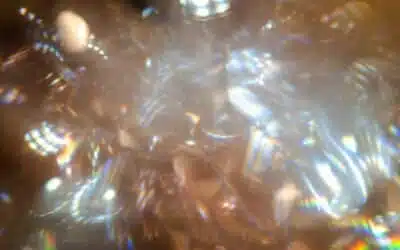Catching the wave in Dzogchen

Written By Mila Khyentse
Blog | Culture and tradition | What about me?
In this article, “Catching the Wave in Dzogchen”, Mila Khyentse talks (a lot) about sand, surfing and the Dzogchen path.
Catching the wave in Dzogchen
For many of us, summer is our favourite time of the year to go to the beach (while we still can…). At the beach, in no particular order, you can sunbathe in sunscreen with a little bit of sand, eat greasy doughnuts with a little bit of sand, take a nap with half your face in a little bit of sand, run with a little bit of sand in your feet, build sandcastles with a little bit of sand, play racket ball or frisbee and eating a little bit of sand in so doing… and catch a wave, well, without a little bit of sand.
Whether you’re on a board or not, catching a wave is quite an art… and it has always reminded me of the path of the Great Perfection. In fact, I wonder what it is that doesn’t make me think of it… a little bit of sand, perhaps.
First you have to get out of your towel, and not everyone can do that. Step 1: Getting started.
Then it’s time to equip yourself if you’re going to start surfing: wetsuit and board – with the age-old debate about which to choose: shortboard, evolutive, fish, mini-malibu and egg, longboard and gun.longboard – leach and wax (the latter is very important: it’s what differentiates your board from an iron, hence Brice’s famous expression: “So how does it wax?”[1]). Step 2: the choice of equipment, i.e. the form of training we’re going to apply: immediate, gradual, a mixture of the two?
All of a sudden you’re up! All those years of training finally pay off: the movement is totally fluid, you don’t even have to think about standing up and balancing on the board, it just happens. It’s totally exhilarating: you start to glide effortlessly on your own. From now on, it’s the board that carries you.
Then, with all our equipment, we head for the water, jump in and paddle, paddle, paddle, until we cross the famous barrier (which is like an invisible wave boundary that separates the waters between paradise, where surfers can catch the rollers, and hell, where they can’t stop paddling to get the much-hoped-for thrill). Step 3: learning the rudiments and crossing the barrier of effortless practice; these are the common preliminaries that show us how to paddle.
After the barrier, we enjoy a moment of peacefulness, sitting on our board and watching the movement of the ocean (we’re in France, on the border between the Landes and the Basque coast… because those are the best spots!), lulled by the swell of the waves that have not yet turned into rollers. Step 4: stabilization of the state of stillness, through the specific preliminaries, the one in which the disturbing emotions subside.
Finally, the fateful moment arrives when the conditions are right: a wave of sufficient force comes over you, you’re fully aligned with it and in the right position, ready to accelerate.
And off you go! Everything happens at once: the wave rises, you paddle and fin with all your might to propel yourself over the crest of the wave, which turns into a roll. Step 5: the creation phase: the one in which we make mental efforts to construct reality and finally fully realize that all phenomena are the creation of our own mind and that their very existence is illusory. This is the realization that all reality is within us.
All of a sudden you’re up! All those years of training finally pay off: the movement is totally fluid, you don’t even have to think about standing up and balancing on the board, it just happens. It’s totally exhilarating: you start to glide effortlessly on your own. From now on, it’s the board that carries you. Step 6: the perfection phase, where we learn spontaneous activity and the fundamental balance of our inner winds.
The roll unfurls all around you, the wave envelops you, everything is in suspense despite the speed and movement, and a simple twist of the hips allows you to start doing complex figures in the roll, in which you move with natural ease. Step 7: the practice of ” untying the binding ” (tib.: khregs gcod, pronounced trekchö), in which we reach our own basis of existence, our own unconditioned and free nature, and where everything is totally natural. This is the first of the two great liberations: the realization of our own empty nature.
Eventually, the interplay of kinetic force, gravity and the decreasing depth of the water brings us out of the roll, carried along by the momentum of the wave. The frenetic race we’ve just experienced gradually slows down as the movement of the wave passes and our board sinks into the water. We end our run gently, in total fluidity, filled with a feeling of boundless accomplishment: that of having made it to the end, surrendering to the natural movement of becoming one with the wave. Step 8: the final practice of the Great Perfection, that of the “immediate leap” (Tib.: thod rgal, pronounced thögäl), in which all the phenomena of reality return to their own primordial ground, and from which they flow back into the natural movement of the totally free mind, like the sun whose rays illuminate the farthest reaches of the galaxy.
This would never have been possible without years of enthusiastic training. Big up! to my favorite teacher, without whom none of this would have been possible. Brice, if you are reading me in Nice…
Waking up on my towel, half of my face covered with a little bit of sand and the remains of a raspberry doughnut with a little bit of sand carelessly placed on top, I find myself thinking that it would be really nice if I finally started surfing!
[1] A French comedy film starring Jean Dujardin: https://en.wikipedia.org/wiki/Brice_de_Nice. BACK
More Posts
Impermanence, Inconstancy and Integration
In « Impermanence, Inconstancy and Integration » Damien talks about how impermanence leads us to the immutable.
The All-Excellent’s Mighty Path of Aspiration
“The All-Excellent’s Mighty Path of Aspiration ” is a new translation from the Dzogchen Today! Translation Committee. Enjoy!
The Eight Sparks of Compassion
In “The Eight Sparks of Compassion”, Mila Khyentse talks about the real nature of phenomena for Dzogchèn: sparkles of compassion.




